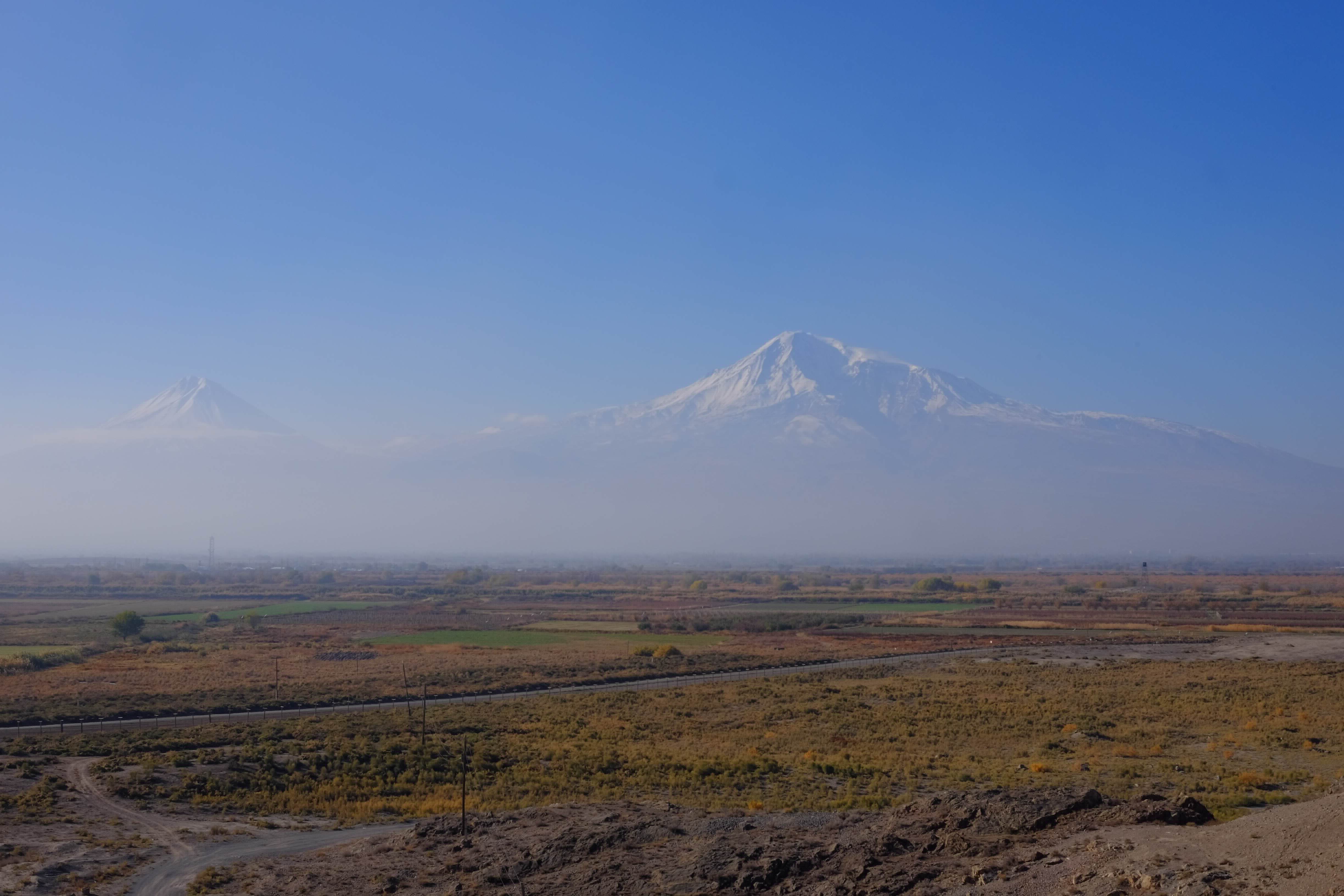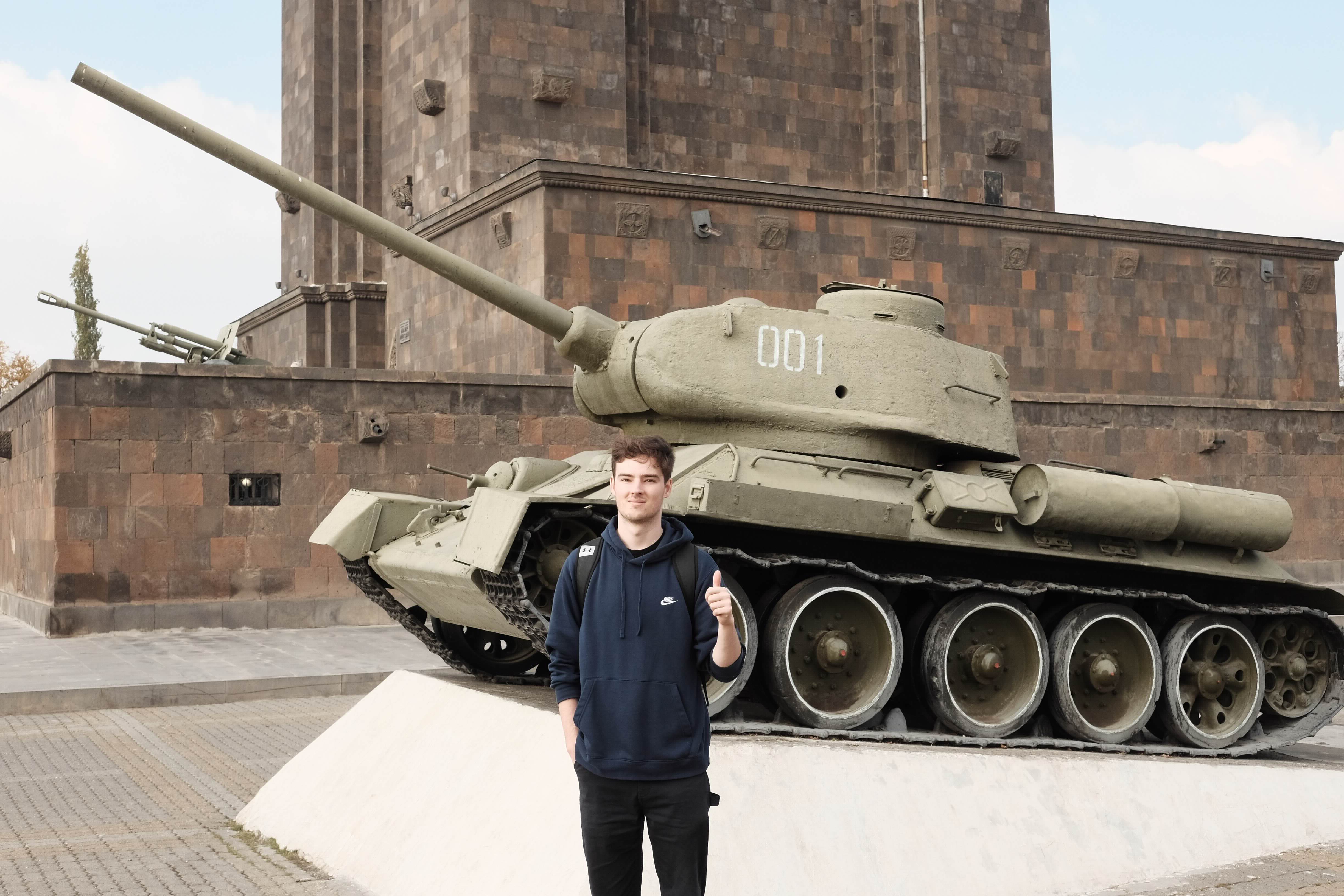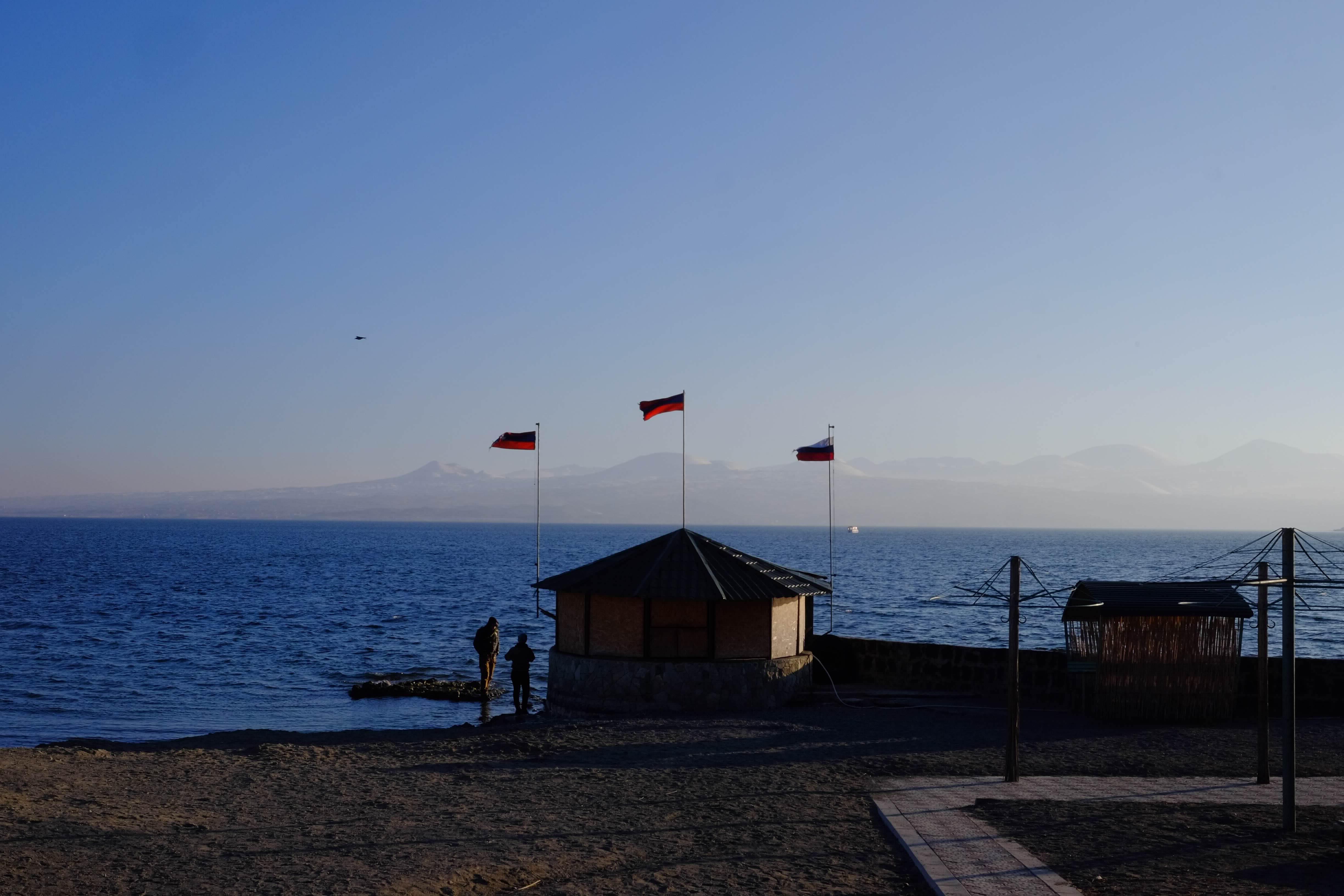The Strangeness of Armenia
posted on 3 March, 2023 by Dan Vonk in personal, travel

Already preceding my entry into Armenia, had I heard accusations and assertions about this place. It was on the train journey to Kars, a town in Turkey, near to the border with Armenia, had we been conversing with a Turkish man who, when we told him we were going to Armenia, made sure to explain that we would hear much about the Armenian genocide, but that it simply wasn’t true. After all, the Ottoman Empire was a powerful entity, he stressed to us, surely if they wanted to exterminate the Armenian people, they would have done so thoroughly and without any half-measures?
In the typical English way, I did not demur at this obviously false and highly inflammatory statement and instead let him continue his rant, though it did cause me to realise the complicated nature of national and race relations in this part of the world.

When we arrived in the border town of Kars, we found it to have a different
atmosphere than the other Turkish cities we visited and we started to get
glimpses of the Armenian culture. Scattered around the place, were remnants of
past Armenian and later, Russian architecture. These structures are distinctive,
built with basalt stone in a rounded-arch style, similar to what westerners
today consider as byzantine architecture. We then took a bus out to the ruins of
the old medieval city of Ani, a UNESCO heritage site. This once-city lays on
the austere plains of the Armenian Highlands , where it is protected on one
side by the dramatic canyon created by the Arkhurian river, shown in the image
above, and a valley on the other side. Once a bustling place, founded around the
5th century, it was a trading centre with the Byzantines, Arabs and the
Persians. It was home to cathedrals, churches of both the Armenian and Georgian
kind, mosques and public squares; all contained in imposing city walls. However,
already in the 11th century, it was sacked by the Seljuk Turks and in the
following centuries also the Mongols. Today just a few of its buildings survive,
standing amongst a whole lot of rubble. Instead the greatest present landmark
here is the skyscraper-sized Turkish flag erected just beside the site. Right on
the border, it proudly displays the extent of the Turkish landmassWe also saw
huge flags from Azerbaijan on the trip.
and the territory conquered from
Armenia.
A few days later, we took the night-train to the capital Yerevan from Georgia. This was quite a strange contrast to our experiences in Georgia. In that country, due to the Russian invasion in 2008, they have tried to erase all traces of Russian culture and history from their cities and towns. However, on the train, we had just entered a little slice of Russia, as it was fully operated by the Russian state railway company RZD. All of the signs were in Russian, as was the toiletry kit and indeed when the border officers came into our cabin, they didn’t greet us in Armenian but instead with Здравствуйте. It turns out that Armenia has sold off their railways to the Russians and indeed border checks are done by the Russian FSB!

When we arrived in Yerevan, I found it equally strange. The city centre, called the Kentron district, is a creation of Stalin and it is actually very beautiful! It is reminiscent of Paris, with its large tree-lined boulevards with impressive buildings like opera houses, museums and academies sitting upon them, all in the typical basalt stone of the region. The metro is very much a relic of the old Soviet times, where you are still required to pay with plastic tokens to pass through the ticket barriers. It is grand and full of marble, just as you might expect but it is only a single line and has seen no expansion since it was built. All the station names are in Cyrillic. One station we visited had a mural on the ceiling showing a map of the territory of Armenia, naturally including places like Kars, which haven’t been Armenian for over a hundred years.

The city also has a large victory park, just as can be found in almost every major city in the former Soviet Union. In this one, there is a 50m tall statue of a woman holding a sword. She is the female personification of Armenia and she replaces an equally huge statue of Josef Stalin that stood there until 1962. Not just Soviet/Russian culture pervades this place, but also their troops. As we took day trips out to places like Lake Sevan, we encountered their garrisons beside the highway. They were always identifiable as they also hung a Russian flag by the side of the road.
These Russian troops are the security guarantors of the country: as soon as Armenia gained its independence in 1991, it started a war with neighbouring Azerbaijan to recapture Ngorno-Karabach, a region in Azerbaijan consisting mainly of Armenians and with a strong historical link to the country. This caused Turkey and Azerbaijan to embargo the country, which still persists to this day. As Azerbaijan’s military has become stronger, due mostly to the country’s vast oil wealth, Armenia’s position has become precarious and has required Russia to step in. This isolates it from their natural ally Georgia, whose recent history causes it to distrust any Russian involvement. Armenia has become an isolated country that feels stuck in the past and with little hope of resolving its geopolitical issues, which is a shame as I found this country to be culturally fascinating and naturally beautiful.